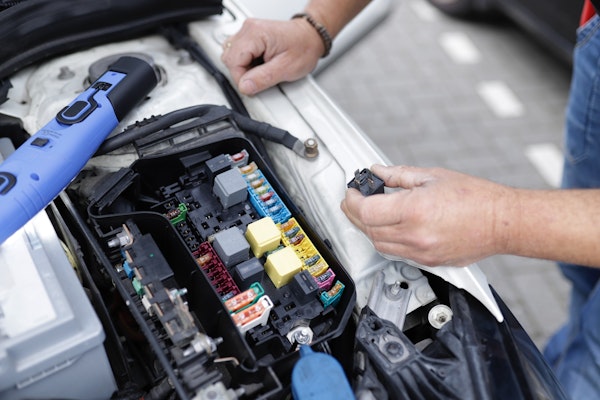
EU Weighs International Carbon Credits to Ease 2040 Emissions Target for Domestic Industries
The European Commission is exploring whether to count international carbon credits toward its 2040 climate goals, a shift that could ease pressure on EU-based industries.
April 7
Catastrophe
Insurance Industry
Legislation & Regulation
Risk Management

Elderly New York Couple Allegedly Scammed Out of $129K in Roofing Fraud Case
A Queens contractor allegedly forged insurance documents and inflated repair costs by over 5,000% in a roofing scheme targeting a Nassau County couple, prosecutors say.
April 7
Fraud
Insurance Industry
Litigation
Property
New York

Orlando Trio Admits to $58 Million Construction Payroll Fraud Scheme
Three Orlando residents face prison time after pleading guilty to a years-long fraud scheme that evaded workers’ comp premiums and payroll taxes in the construction sector.
April 7
Fraud
Insurance Industry
Litigation
Workers' Compensation
Florida

Historic Flooding Threat Intensifies Across Central US After Devastating Storms and Tornadoes
Following deadly tornadoes and widespread storm damage, central US states now face a rare high-risk flood event that could bring once-in-a-generation impacts.
April 4
Catastrophe
Property
Arkansas
Indiana
Kentucky
Mississippi
Missouri

How Louisiana Can Unlock Social Mobility and Reclaim the American Dream
Louisiana ranks last in social mobility, but reforms in education, licensing, taxation, and regulation offer hope for progress and a renewed path to the American Dream.
April 4
Education & Training
Insurance Industry
Legislation & Regulation
Liability
Louisiana

Georgia Insurer Challenges $22 Million Jury Verdict After Truck Crash
A Georgia insurer is refusing to pay a $22 million jury award after a truck accident, spotlighting tensions between policy limits, tort reform, and bad faith allegations.
April 4
Insurance Industry
Legislation & Regulation
Liability
Litigation
Georgia

Insurance Industry Races to Scale AI Despite Roadblocks in Deployment
Nearly 90% of insurance leaders prioritize AI in 2025, yet most remain stuck in early adoption stages due to talent gaps, data challenges, and deployment complexity.
April 4
Insurance Industry
Technology
Underwriting

Auto Insurance Premiums Set to Rise as Global Tariffs Drive Up Repair Costs
New global vehicle and parts tariffs are expected to drive up repair and claim costs, forcing U.S. auto insurers to implement more premium increases in 2025.
April 4
Auto
Insurance Industry
Legislation & Regulation
Risk Management

Triple-I’s 2024 Report Showcases Advocacy Wins Media Milestones and Economic Insight
Triple-I’s 2024 Annual Report highlights record media presence, advocacy on legal system abuse, AI insights, and economic research that shaped the P/C insurance landscape.
April 4
Insurance Industry
Legislation & Regulation
Litigation
Technology

Judge Rejects J&J’s $10B Settlement, Citing Insufficient Plaintiff Support
A judge has rejected Johnson & Johnson’s $10 billion settlement proposal for talc-related ovarian cancer lawsuits, citing insufficient plaintiff support and procedural flaws. The decision forces J&J back to the tort system, impacting potential future claims and litigation strategies for insurers.
April 2
Insurance Industry
Liability
Litigation
Risk Management
Texas

Mental Health Becomes Leading Workplace Injury as Small Businesses Struggle with Safety and Costs
Three in four small businesses experienced a workplace injury in the past year, with mental health injuries now surpassing physical ones as the most reported incident.
April 2
Life & Health
Risk Management
Technology
Workers' Compensation

AI Is Reshaping Brand Visibility and Risk in the New Answer Economy
AI is transforming search into an answer-based economy, where brand exposure, trust, and business risk are shaped by algorithmic visibility and content readiness.
April 2
Education & Training
Insurance Industry
Risk Management
Technology
Ohio

Kentucky Farmer Admits to Multi-Year Crop Insurance Fraud Using Family Names
A Taylor County farmer has pleaded guilty to falsifying crop loss claims for over $1.4 million in insurance payments, using relatives’ names to hide actual production.
April 2
Fraud
Insurance Industry
Legislation & Regulation
Property
Kentucky

How AI and Data Are Reshaping Workers’ Compensation Fraud Detection
Insurers are using artificial intelligence, predictive analytics, and cross-industry collaboration to detect and prevent workers’ compensation fraud in real time.
March 31
Fraud
Risk Management
Technology
Workers' Compensation

Construction Site Injury Fraud Allegations Spark Legal Battle in New York City
Construction leaders say fraudulent injury claims are driving up costs and insurance rates, but critics argue that systemic safety issues and legal rights are being overlooked.
March 31
Fraud
Insurance Industry
Litigation
Workers' Compensation
New York





